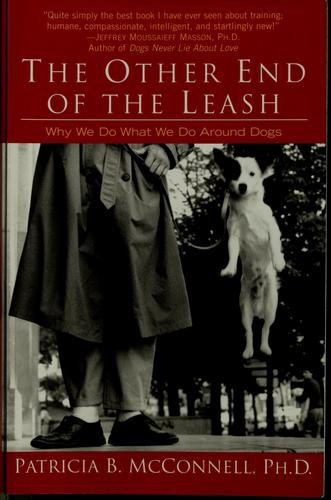
The Other End of the Leash PDF
Preview The Other End of the Leash
The Other End of the Leash begins with an eloquently simple premise: "All dogs are brilliant at perceiving the slightest movement that we make, and they assume each tiny movement has meaning." With that in mind, all of Dr. Patricia McConnell's recommendations for communicating with your canine make immediate sense. Don't we all automatically bend forward when coaxing a dog to come and play? Break eye contact when we wish to avoid a confrontation? While these instinctive behaviors are right on target, a number of other habits aren't so positive, and McConnell helps us break them with both humor and common sense.
Chapters are categorized by senses such as sound, sight, and smell; specific pack behaviors such as dominance and play also merit their own sections. McConnell uses the same humor and patience she recommends with dogs on her readers. Whether she's referring to maggots as "a value-added commodity in canine economics" or ruminating on attempts to verbally cue her dogs to exit the house one at a time, her wise and gently self-deprecating book brings training--of both dogs and humans--to new levels. Jill Lightner
From Publishers WeeklyIt matters greatly that people who love dogs understand enough about them to provide a good environment, writes McConnell (Feeling Outnumbered? How to Manage Your Multi-dog Household) in her thoughtful exposition on improving human-canine communication. An animal behaviorist and adjunct professor of zoology at the University of Wisconsin Madison, McConnell offers sound advice for dog owners: Pay attention to your own behavior. Believe me, your dog is. Drawing on anecdotes from her professional practice (she specializes in canine behavior problems), research into the work of other dog trainers and personal experiences with her beloved Border collies, the author explains how a dog might be misinterpreting signals from its owner. For example, although humans express affection through hugs, a dog may feel threatened by them. McConnell also provides tips on how to play safely with dogs (she recommends games of fetch rather than rough-and-tumble wrestling) and how to get them to do what you want (the best way to get a dog to stop demanding attention is simply to break off visual contact). She has harsh words for trainers who tell owners to establish dominance over dogs by behaving aggressively to them when they are young, and also for owners of puppy mills. These dog factories, she says, create damaged animals and unsuitable pets. This is a helpful guide for pet owners by a specialist who clearly loves her work. B&w photos not seen by PW.
Copyright 2002 Cahners Business Information, Inc.
